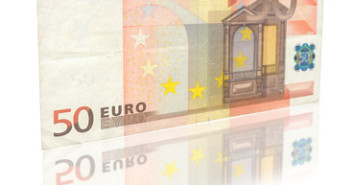EUR/USD posted sharp gains in Thursday’s session, gaining over a cent and pushing past the 1.31 level. The markets reacted favorably to the ECB decision to hold interest rates at 0.75%, as well as positive comments from ECB head Mario Draghi. In the US, Employment Claims looked sharp, and the markets will be hoping for a repeat performance on Friday as the US releases Non-Farm Employment Change and the all-important Unemployment Rate. In Europe, today’s major release is German Industrial Production.
Here is a quick update on the technical situation, indicators, and market sentiment that moves euro/dollar.
EUR/USD Technical
- Asian session: Euro/dollar dipped below 1.31, touching a low of 1.3080, and then consolidated at 1.3083. In the European session, the pair has edged up slightly.
- Current range: 1.3030 to 1.3100.
Further levels in both directions:Â 
 Â
Â





- Below: 1.3030, 1.3000, 1.2960, 1.2880, 1.2805, 1.2746, 1.27 and 1.2660.
- Above: 1.3100, 1.3130, 1.3170, 1.3255, 1.3290, 1.3350, 1.34 and 1.3486.
- On the upside, 1.3100 is under pressure. 1.3170 remains a key line of resistance.
- On the upside, 1.3030 is the next support level.
Euro/dollar posts sharp gains after ECB rate announcement – click on the graph to enlarge.
EUR/USD Fundamentals
- 7:45 French Government Budget Balance. Actual -12.8B
- 11:00 German Industrial Production. Exp. 0.6%
- 13:30 US Non-Farm Employment Change. Exp. 162K. See how to trade this event with EUR/USD
- 13:30 US Unemployment Rate. Exp. 7.9%
- 13:30 US Average Hourly Earnings. Exp. 0.2%
- 15:00 US Wholesale Inventories. Exp. 0.4%
For more events and lines, see the EUR/USD
EUR/USD Sentiment
- ECB holds steady on rates: The ECB left interest rates unchanged on Thursday, keeping the benchmark rate at 0.75%, and the deposit rate at 0%. Although ECB head Mario Draghi mostly repeated what we’ve heard before, the markets were nonetheless pleased, and the euro shot up, gaining over one cent. Draghi reiterated that the Eurozone economy is struggling but things should turn around later in the year. He also added that the decision to maintain rates was not unanimous, as there had been calls to lower rates in order to boost lackluster growth. Draghi also tried to downplay the crisis in Italy, but called on member countries to implement needed structural reforms, a clear hint to Italy to continue with austerity measures in order to get its fiscal house in order.
- Italian political stalemate continues: The political crisis continues to fester Italy, paralyzing the Eurozone’s third largest economy. With Italy facing serious economic difficulties, the country can ill-afford to wait as the political leaders continue to fight with each other. Center-left leader Pier Luigi Bersani has expressed his readiness to form a minority government with populist leader Beppe Grillo. Grillo, the unpredictable head of the 5 Star Movement, has so far refused to join forces with any other party, and seems content to force new elections. Parliament will sit for the first time next week, and President Giorio Napolitano is expected to begin consultations with party leaders on March 19, as efforts to sort out the political paralysis shift into high gear.
- Spain asks for flexibility to reduce deficit: At a meeting of European finance ministers earlier this week, Spain asked for more time to reduce its budget deficit. Economy Minister Luis de Guindos said Spain had lowered its deficit and restored its credibility with international credit markets. He pointed to the fact that Spain has reduced its budget deficit from 9% of GDP in 2011 to under 7% in 2012. However, this still falls well short of the EU limit of 3%. Theoretically, the EU could halt aid to Spain due to its lack of compliance, but such a drastic step is very unlikely. The bloc wants to see Spain regain its financial footing, and some compromise will likely be reached.
- US faces another fiscal crisis: Remember the fiscal cliff crisis just a few months ago? This time the budget crisis is called “sequestrationâ€, which saw $85 billion in automatic spending cuts kick in on last week. Democrats and Republicans failed to reach agreement and were quick to point fingers at each other for the impasse. The core issues, spending cuts and tax reforms, continue to divide US lawmakers along party lines. Republicans want to take the axe to social programs such as Medicaide, while Democrats insists on tax hikes as part of any deficit reduction plan. President Obama invited Republican Senators to the White House, as he continues a high-profile campaign to break the deadlock on Capitol Hill. However, it will take more than just handshakes and hugs to break the logjam, as Republicans and Democrats are likely to battle hard, as they did during the fiscal cliff crisis.
- Will Fed reconsider QE? The US has posted some solid economic releases of late, and this has rekindled discussion as to whether the Fed might wind up its current round of QE, which involves the purchase of $85 billion in assets each month. Although Fed Chair Bernard Bernanke and Vice-Chair Janet Yellen have stated that QE will continue, evidence of a stronger recovery would put pressure on the Fed to consider winding up or modifying the current asset purchase program. Employment numbers have looked good and if we see a drop in the Unemployment Rate of Friday, this would be further evidence that the recovery is gaining traction, and the Fed will face more pressure to wind down its stimulus program.



